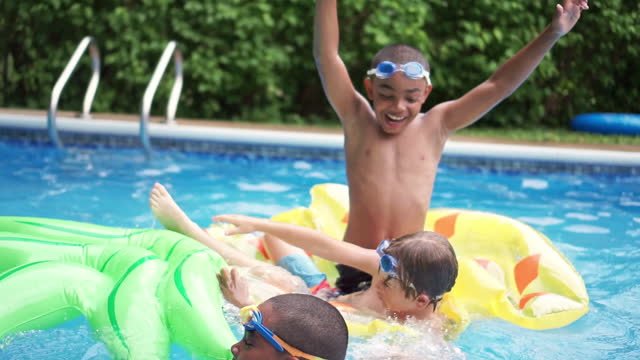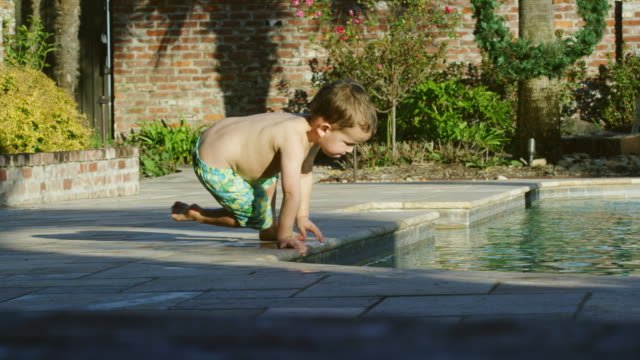
- calendar_month July 8, 2024
- folder Community Awareness
Sharing Tags
Child safety, CPR Training, Drowning Prevention, Dry Drowning, Emergency Response, Life Jackets, Pool Safety, Summer Safety, Swimming Safety, Water Safety

Hello everyone! I'm Nathan Derry, a Realtor with JohnHart Real Estate. Today, I want to discuss an essential topic that goes beyond Real Estate: water safety. With the warm weather inviting us all to enjoy pools, lakes, and beaches, it’s crucial to understand the importance of water safety to prevent tragic accidents. Let's dive into the critical aspects of water safety, including the phenomenon known as dry drowning, how to prevent drowning, and what actions to take if someone is in distress.
Understanding Dry Drowning

Dry drowning is a term that describes a delayed physical reaction to water entering the lungs. Unlike traditional drowning, dry drowning can occur up to 24 hours after water exposure. Here’s what you need to know:
- How It Happens: When water is inhaled, it can cause the vocal cords to spasm and close up, making breathing difficult. This reaction can occur immediately or several hours after being in the water.
- Symptoms to Watch For: Look for coughing, chest pain, trouble breathing, extreme fatigue, and changes in behavior. These symptoms can indicate that the body is struggling to get enough oxygen.
- Why It’s Dangerous: The delayed onset of symptoms can make it difficult to recognize and treat promptly, leading to fatal respiratory issues if not addressed.
Preventing Drowning: Key Tips
Drowning is a leading cause of accidental death, especially among children. Here are some essential tips to prevent drowning:
- Constant Supervision: Never leave children unattended near water, even for a moment. Designate a responsible adult to watch the water when groups are swimming.
- Swimming Skills: Enroll children in swimming lessons to improve their ability to navigate water safely.
- Life Jackets: Use life jackets for young children and inexperienced swimmers when in or around open water.
- Barriers and Alarms: Install fences around pools with self-latching gates and consider pool alarms to alert you if someone enters the water unexpectedly.
- Know CPR: Learning CPR can be lifesaving in emergencies. Immediate CPR can increase the chances of survival until professional help arrives.
Responding to a Water Emergency

If you see someone in distress in the water, here’s what to do:
- Call for Help: Shout for help and call 911 immediately.
- Throw, Don’t Go: If the person is within reach, use a long object to pull them to safety. If you must enter the water, use a flotation device to keep yourself safe.
- Begin CPR: If the person is not breathing, begin CPR immediately. Continue until emergency responders arrive.
Dry drowning is a term that describes a specific type of delayed drowning response that can occur after someone has been in the water. While it is relatively rare, it is essential to understand its characteristics and implications.
Characteristics of Dry Drowning
-
Delayed Onset: Unlike typical drowning, which occurs immediately after submersion in water, dry drowning can happen up to 24 hours after the initial water exposure. This delay can make it challenging to recognize and respond promptly.
-
Mechanism: Dry drowning occurs when a small amount of water is inhaled, causing the vocal cords to spasm and close up. This reaction can obstruct the airway, making it difficult or impossible to breathe. The spasms can be triggered even if the water exposure was minor and did not involve complete submersion.
-
Symptoms: The signs of dry drowning usually appear within a few hours after exiting the water. Symptoms to watch for include:
- Persistent coughing
- Difficulty breathing or shortness of breath
- Chest pain
- Extreme fatigue or unusual behavior changes
- Vomiting
-
Severity: While the term "dry drowning" can sound alarming, it is crucial to note that it is rare. However, when it does occur, it can be life-threatening if not treated promptly. The lack of immediate, obvious distress following water exposure can make it more dangerous because the symptoms can develop and worsen quietly.
Prevention and Response
- Supervision: Always supervise children closely around water and ensure they are within arm's reach.
- Swimming Skills: Enroll children in swimming lessons to improve their comfort and ability in the water.
- Avoid Risky Behaviors: Discourage breath-holding games and monitor for signs of distress even after leaving the water.
- Seek Medical Attention: If any symptoms of dry drowning appear after water exposure, seek medical attention immediately. Early intervention can prevent severe complications.
Dry drowning is a delayed reaction to water exposure characterized by respiratory distress due to laryngeal spasms. Although it is rare, being aware of the symptoms and knowing how to respond can save lives. Always prioritize water safety and remain vigilant even after water activities have concluded.
By understanding and recognizing the signs of dry drowning, you can help ensure the safety of yourself and your loved ones during and after water activities.
Water activities should be enjoyable and safe for everyone. By understanding the risks associated with water environments, particularly the dangers of dry drowning, and taking preventive measures, we can significantly reduce the chances of accidents and fatalities.
Remember, vigilance, education, and preparedness are the keys to ensuring water safety. If you have any questions or need assistance, feel free to reach out. Stay safe and enjoy the summer!
All the best,
Nathan Derry JohnHart Real Estate

📍JohnHart Real Estate
📞(424) 303-0440
📧 nathan@jhagents.com
👨🏽💻 itsnathanderry.com
Interested in seeing a property or one of my off market properties in person? Contact me today! Who you hire matters!!!
Ready to make the best move of your life… let’s chat today!
